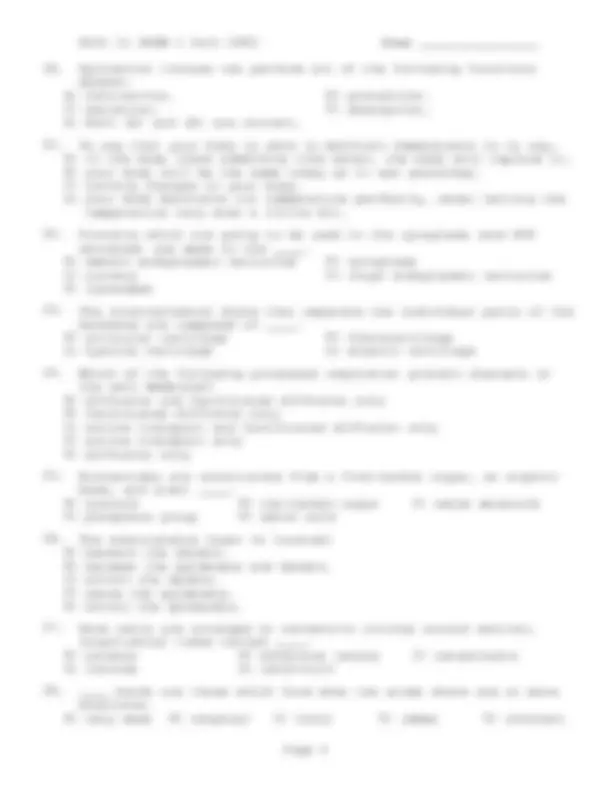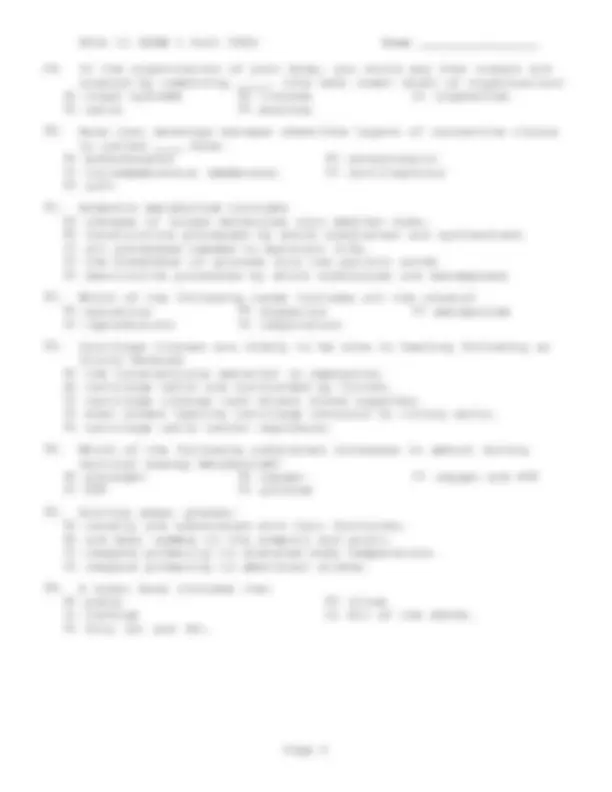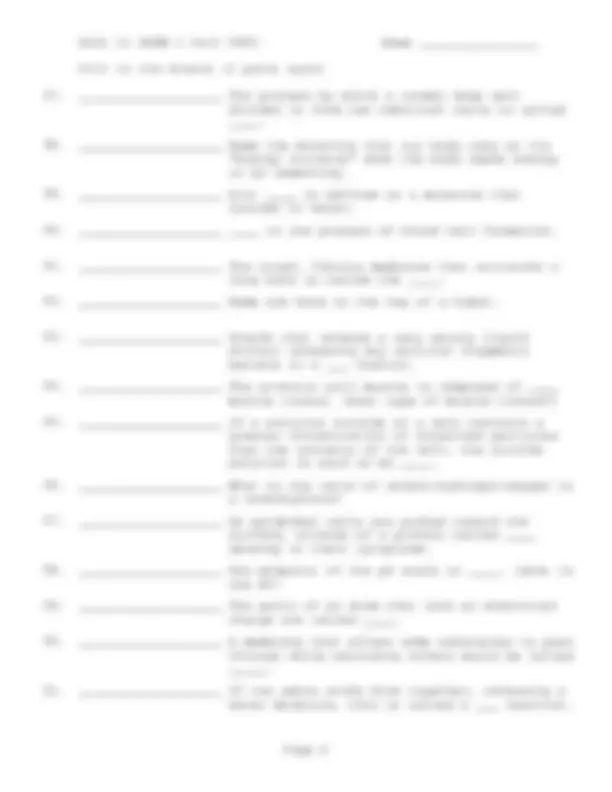





Study with the several resources on Docsity

Earn points by helping other students or get them with a premium plan


Prepare for your exams
Study with the several resources on Docsity

Earn points to download
Earn points by helping other students or get them with a premium plan
Community
Ask the community for help and clear up your study doubts
Discover the best universities in your country according to Docsity users
Free resources
Download our free guides on studying techniques, anxiety management strategies, and thesis advice from Docsity tutors
Material Type: Exam; Class: Human Anatomy and Physiology; Subject: Biological Sciences; University: University of the Pacific; Term: Fall 2002;
Typology: Exams
1 / 5

This page cannot be seen from the preview
Don't miss anything!




Multiple choice: select the single most correct answer to each question and mark the letter corresponding to that answer on the SCANMARK card provided. (2 points each)
able to sense changes around it and ____. A) (^) reproduce B) (^) circulate body fluids C) breathe D) assimilate nutrients E) react to them
in the body? A) oxygen B) carbon C) sodium D) hydrogen E) nitrogen
membrane across to the other side is called ____. A) (^) diffusion B) (^) osmosis C) active transport D) (^) phagocytosis E) facilitated diffusion
Use the following equation to answer the questions below.
A) base B) (^) protein C) (^) carbohydrate D) acid E) (^) ion
end-product. A) (^) glycogen B) (^) carbon dioxide C) (^) water D) lactic acid E) (^) pyruvic acid
is called ____ bone. A) (^) endochondral B) (^) osteoclastic C) intramembranous (membrane) D) (^) cartilaginous E) soft
cellular energy metabolism? A) (^) glycogen B) (^) oxygen C) (^) oxygen and ATP D) ATP E) (^) glucose
Fill in the blanks (1 point each)
muscle tissue. (what type of muscle tissue?)
the #?)
through while excluding others would be called _____.